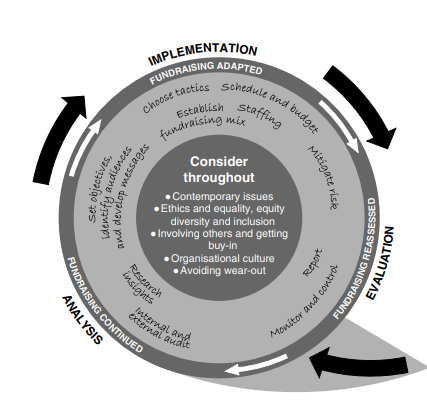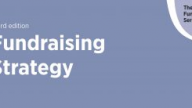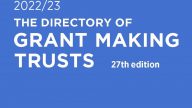Turning the wheel of fundraising fortune
Discover fundraising strategy using Richard Sved's strategy cycle diagram which encapsulates the fundraising process.
There’s a fundraising strategy diagram that features in the introduction to Fundraising Strategy, the new book I’ve just co-written with the brilliant Dr Claire Routley, which I am proud to say was published in November 2021 by DSC. It is our interpretation of the fundraising strategy cycle and I’m going to talk you through its genesis in this short article to explain the thinking behind it. Read on!
The origins of the diagram
In my many years of developing fundraising strategies for charities, and training others to develop strategies of their own, I’ve been asked for templates or models to encapsulate the fundraising process so many times. I’ve always been reluctant to give them because every charity’s situation is different and the process is so inter-connected. Mind you, if I had a pound for every time I’ve been asked for one… that’s quite a good fundraising idea!
Funnily enough, the diagram or model that we did come up with for the book didn’t appear in the first draft, mainly because we hadn’t drawn it at that point! One of our kind reviewers suggested that a flow chart diagram would be really helpful to show the order in which fundraisers should tackle key elements when developing their fundraising strategy. The book is divided into the following chapters and you might think that fundraisers could follow that sequential approach in their practice.
- The fundraising audit
- The internal audit and SWOT analysis
- Improving your strategy with research
- Setting objectives and identifying your audience
- Developing your message
- Choosing your tactics
- Scheduling and budgeting for your fundraising
- Monitoring and controlling your fundraising performance
- Getting internal buy-in and managing change
- Fundraising ethics
- Contemporary issues in fundraising
- Avoiding strategic wear-out
But sadly life, and certainly fundraising, isn’t that simple. Chapter order or even a simple flowchart doesn’t really cut the mustard. You see, while topics need to be divided into chapters for the purpose of the book, some elements can’t be done one at a time as it takes too long and some things just must overlap or be done in parallel. For example, getting internal buy-in features relatively late as a chapter in the book, but you really need to be involving and getting the support of your colleagues from the beginning. If you don’t, crucially you lose people along the way and don’t get support for your initiatives.
First, I will drink the coffee and then I will do all the things
We started reflecting on that reviewer’s request for a diagram and felt that it might indeed be possible to represent the multi-faceted excitement of fundraising strategy development in a single model or image.
Have another look at the outer, dark grey ring of the wheel.
We didn’t want our readers to hold off from doing vital fundraising because they hadn’t finished the book. We didn’t want them to read the book first (like that early morning coffee) and then do all the things. In effect, we didn’t want the book to get in the way.
You can’t stop fundraising because you’re thinking about your fundraising strategy, however important the latter is. That is why we added the arrows and words ‘analysis’, ‘implementation’ and ‘evaluation’ on the wheel outside the main circle – which represents the ongoing process. The iterative cycle is:
Analyse. Implement. Evaluate.
Go again.
Continue your fundraising. Adapt your fundraising. Research how well it worked.
Go again.
Continue building relationships, valuing and looking after your supporters, maintaining the tried-and-tested fundraising you know works well.
Go again.
Some things do come earlier on than others
But there are some aspects of strategy that you would ordinarily expect to do early in the process of developing your fundraising strategy, and others later on, even if you don’t necessarily tackle them one at a time. Arguably, for example, you should be thinking about auditing your fundraising, setting your objectives, identifying your audiences and refining your messages earlier in your thinking than, say, considering how you budget or monitor and control your fundraising. And considering your fundraising mix, deciding on your tactics and working out how to meet your staffing needs probably sit in between the two.
You will see that these elements appear on an inner ring of the wheel, and while some things appear before others, they often overlap.
At the still point of the turning world
Then, there are the things, we would argue, that you should be considering throughout – like fundraising ethics, equality, equity, diversity and inclusion, getting buy-in, and organisational culture. Ensure that these are never far from the very front of your mind. They are all hugely important, and none of them should be dropped. We have represented these in the very centre of the wheel. Neglect any of them at your peril.
This is where I come in
Finally, have another look at the big black arrows on the outer circle, and you’ll see the other reason we didn’t want to draw a simple flow chart. It’s so rare that any of us are on ‘square one’ or merely ‘starting at the top of the diagram’ – even if we think we are. Where do you enter the wheel? What have you done well already? What important aspects might you have missed out, or perhaps should have another think about? What do you need to think about doing in order to get a fuller picture? Where do you want to get to?
And that, put simply, is the essence of any strategy. Where do you want your organisation to get to with its fundraising? And how can you get there?
We’re passionate about the power and potential of fundraising to change our world, and the importance of doing it strategically. You’ll find out much more to help you with it in the book.
Analyse. Implement. Evaluate. Change the world!
Good luck.
Fundraising Strategy
Fundraising Strategy by Claire Routley and Richard Sved is published by Directory of Social Change in association with University of Kent and the Chartered Institute of Fundraising.



